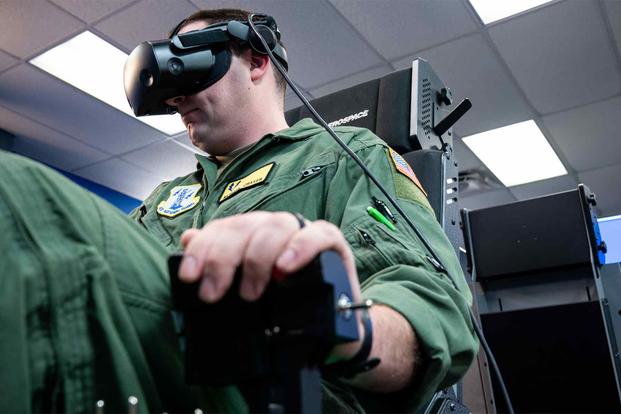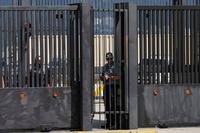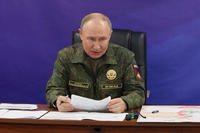Senior Air Force leaders are sounding the alarm at a lack of high-tech flight simulators and are calling for upgrades they say are necessary to prepare for combat in a next-generation fight, according to a new research report.
The report published by Rand Corp., a nonprofit think tank that researches issues in the military, addresses a need for the Pentagon to fund new sophisticated flight simulators, sometimes called "sims." Several Air Force officials with major commands cited in the report, who spoke under the condition of anonymity for the research, say it's a major issue for pilots.
One Air Force official said there is an "unmet need for sims," adding that, in "an ideal world, we'd be getting more [readiness data] from sims than from aircraft. The outcomes that we want to predict are not available in live-fly," the report detailed.
Read Next: Schultz's Presence at Coast Guard Academy Homecoming Said to Roil Some
Some Air Force officials disclosed in the report that regular training cannot produce the same data that the sophisticated scenarios and virtually unlimited combat possibilities that sims can produce, but added that, still, more uniformity is needed for all the technology as a whole.
The focus on investing in high-tech simulators comes as tensions grow with China and the Pentagon works to compete with the People's Liberation Army. The Air Force is worried that it is not properly analyzing how crews are performing when it must rely on more traditional sorties and aging simulators.
"The relative scarcity of opportunities to train against such threats and the lack of tools to capture performance data mean that commanders must make subjective, incomplete assessments of the capability of their units in the most important operational scenarios," the Rand report states.
Researchers said that simulators for B-1 Lancer, B-2 Spirit and B-52 Stratofortress bombers lack "fidelity" -- a term used to indicate that they are not a true reflection of what the craft or environment is like. Additionally, Air Force Special Operations Command's simulators can't keep up "because of the high rate at which the command's aircraft are modified," according to the report.
Senior Air Force leaders told Rand that the service's shortage of updated and high-tech simulators stems partly from a desire to invest in more aircraft and engines -- both of which are easier requests to get funded.
But one senior leader told Rand that "it doesn't matter if you have engines or not, because you will fail at the mission" if simulation training is put on the back burner.
The desire for advanced simulators comes amid a long-standing pilot shortage that is due, in part, to the service's woes with training aircraft, as the T-38 Talon has faced continuing mechanical issues.
"The USAF is not measuring the most useful things to gain insight on the readiness of the force. Legacy metrics focus on the ability of individual service members to conduct individual missions," the report said. "Both USAF training requirements and how training is achieved need to change to capture more-meaningful readiness metrics."
One of the many suggestions proposed in the Rand report is for the Air Force to invest in "more simulators and new synthetic threat environments." It also recommended the service form a working group to guide future efforts to update virtual threat environments.
Military.com reported in September that the Air Force was short on the number of pilots it hoped to train in fiscal 2023, falling roughly 120 aviators short of its goals. That was at least partly due to mechanical issues with training aircraft.
The service has averaged around 1,300 new pilots each year for nearly a decade, short of its goal of around 1,500 annually. Recent shortages have been attributed to a range of issues, such as delays in getting new engines into T-38 Talon training jets, a lack of instructors, and delays in getting new airmen into the training pipeline.
-- Thomas Novelly can be reached at thomas.novelly@military.com. Follow him on Twitter @TomNovelly.
Related: Air Force on Course to Again Miss Pilot Goal as Problems with Training Aircraft Persist












